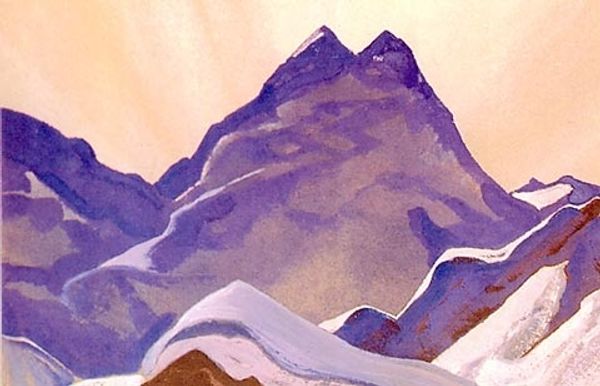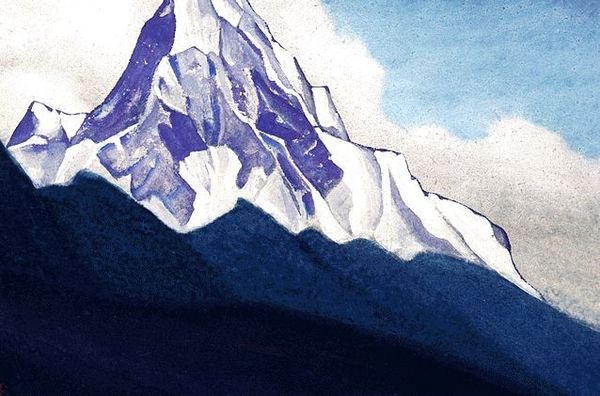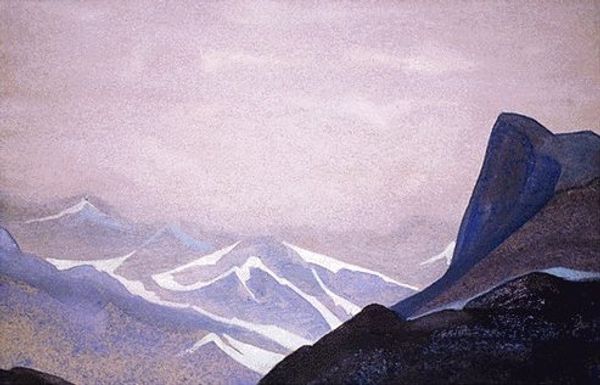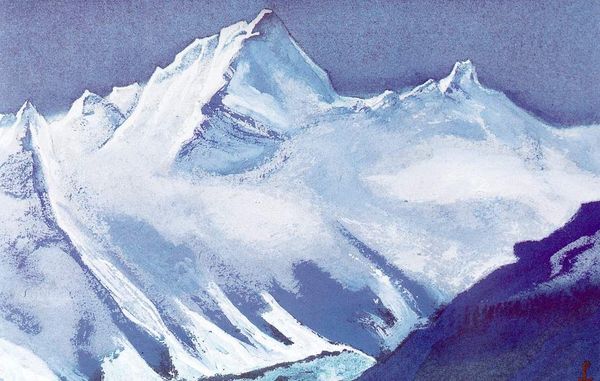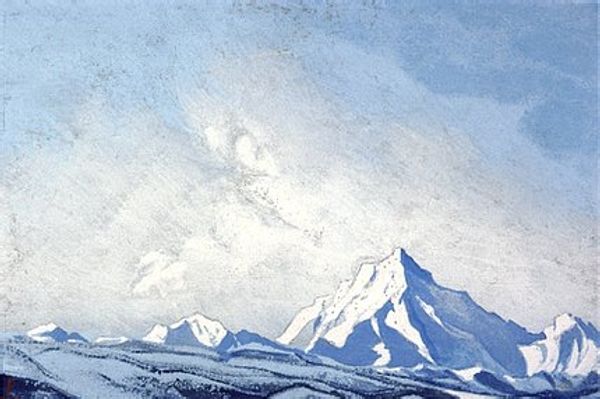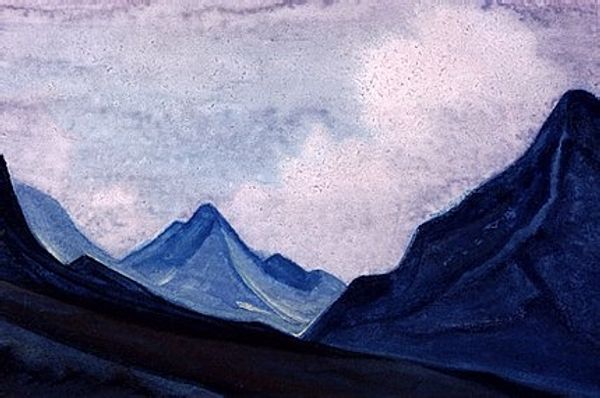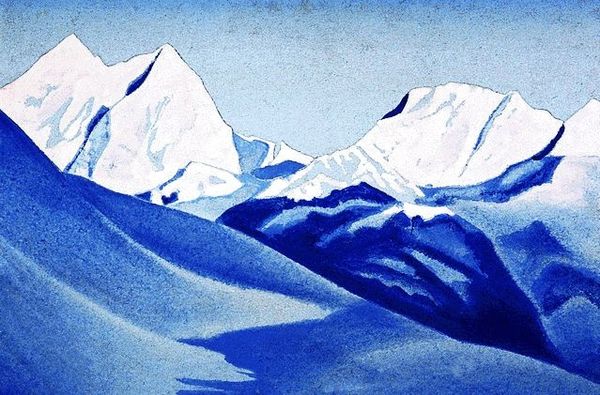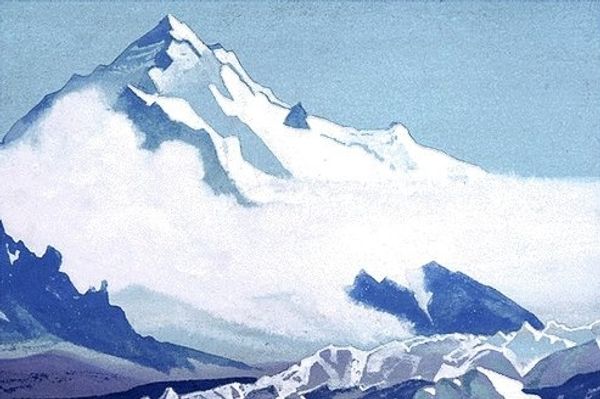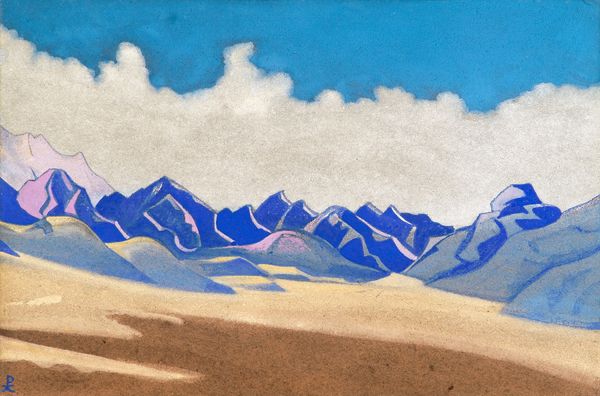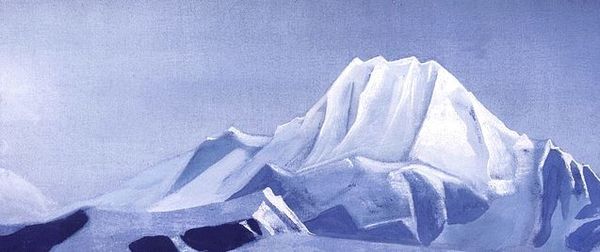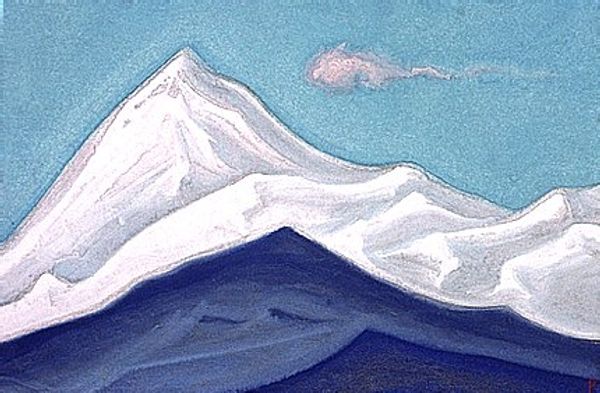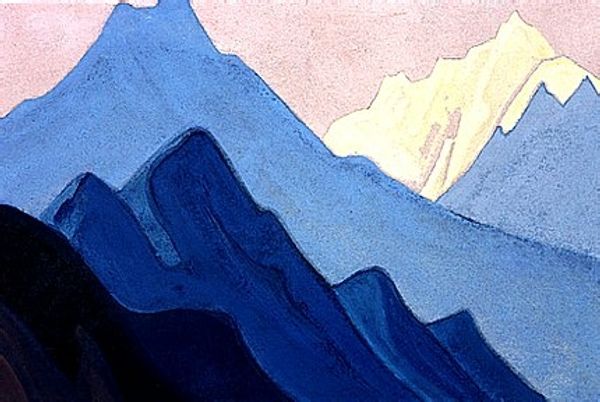
Copyright: Public domain
Curator: Here we see Nicholas Roerich's painting "Himalayas" from 1943, an oil on canvas work. Its style nods to romanticism. What are your first impressions? Editor: Stark. Imposing, even. It's almost entirely blues and whites, conveying the cold majesty of the mountain range. A limited palette contributes to the monumental feel of the piece. Curator: Roerich, you know, was deeply interested in the spiritual dimensions of landscape. The Himalayas held a particularly special place in his iconography; for him, they represented a bridge between the earthly and the divine. Editor: Right. Mountains often feature prominently as sacred sites across cultures. There's the Western notion of the sublime, an awareness of nature’s overwhelming power, and its implications for the smallness of humankind in the grand scheme. It was popular for artists to evoke romantic feelings for the unyielding dominance of nature and creation. I suspect Roerich knew that these are inherently politicized paintings—they visually convey an imperial ambition. Curator: Very insightful. His journeys through Asia certainly shaped his artistic and philosophical vision. It seems he saw himself as part of the spiritual continuum. This particular visual is compelling to those interested in Eastern philosophy and spirituality. Mountains represent obstacles to overcome to reach enlightenment. I find Roerich's approach optimistic: they represent the challenges of the inner journey, and the divine awaits anyone willing to confront them. Editor: Yet Roerich's view wasn’t monolithic. It came through layers of imperial ideology and Russian messianism that can seem...problematic today. His work, embraced by some political elements, demands we reflect on how landscape becomes interwoven with socio-political agendas, shaping collective memory. Curator: Indeed. But to circle back, beyond the geopolitics, this piece serves as a potent reminder of the Himalayas as enduring cultural symbols of spiritual quest and human potential. Editor: A symbol whose interpretation is historically situated, shaped by global and cultural contexts, revealing how our reading of such potent images has changed over time.
Comments
No comments
Be the first to comment and join the conversation on the ultimate creative platform.

